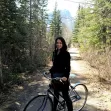Exclusives
BLOG POST
California Eliminates Transit, Expands Freeways
<p> Here in San Diego, public transportation is on life support. Despite record ridership, trolley and bus service has been reduced, with some bus routes cancelled altogether. Fares are up across the board. The monthly light rail pass will be $72; three years ago it was $60. <br />
BLOG POST
Pedestrian Sprawl Alert: Streets Gone Wild
<p> Once upon a time public rights-of-way were simpler; they made sense. The mobile laws of society were black and white. Streets were for cars and sidewalks were for, well, walking on the side of the street. You know, out of the way? At some point recently though things have started to blur, and it's starting to get just a little bit out of control. It's hard to put one's finger on it, but lately there's been this funny notion that the street itself, long the gift to man-and-machine, is supposed to be shared with people who just can't seem to keep themselves on their side of the curb. Woe is me, in some instances there isn't even a curb anymore! What's worse, it seems apparent that our public officials, the very people we elect to represent us an
BLOG POST
The Takings Muddle: A Brief Guide
<p> The Takings Clause of the Fifth Amendment provides that government may not take private property without just compensation. The courts have held that this clause requires government to compensate landowners for losses caused by government regulation in certain situations- most notably when regulation leads to a permanent physical invasion of property (1) or makes property worthless (2). </p>
BLOG POST
Travel Demands Are A-Changing: So Should Our Spending
<p style="margin: 0cm 0cm 10pt" class="MsoNormal"> <span style="font-size: small; font-family: Arial"><span style="font-size: small; font-family: Arial"><em>Politicians and planners be warned: you will now be judged according to your ability to improve walking, cycling and public transit services.</em></span> </span> </p>
FEATURE
Making A 'Playborhood'
Mike Lanza, an entrepreneur in Palo Alto, CA, is using his front yard as a place for his friends and neighbors to gather and play. Julia Galef from the Project for Public Spaces brings us this story.
BLOG POST
A Twitter in the City
<p> Will the red-hot microblogging platform <a href="http://www.twitter.com" target="_blank">Twitter</a> change the way we live in our cities, how we call for help in an emergency, or even help rally a group to topple the city's government? Or is it a frivolous technology that simply atomizes our thoughts and relationships into 140-character bits? </p>
BLOG POST
A Stop Gap Between Vespa And Smart Car?
<p> Posted today on CNN, optimistically under “SPECIAL REPORT – Detroit’s Downfall”, was a <a href="http://money.cnn.com/2009/04/07/autos/gm_segway/index.htm">brief</a> about GM and personal transport company Segway collaborating on a project called “Personal Urban Mobility and Accessibility” (P.U.M.A.). Along with some future-thinking gush about vehicle interconnectivity are eye candy photos of the traditional Seqway chassis redesigned as a side-by-side two-seater with a degree of weather protection and other accommodations to make the vehicle a tad more practical than the original stand-up version. For those who find the Smart car a tad dumb on the bang:buck ratio but are not about to don a helmet and go the scooter route, the P.U.M.A. may offer a new market segment.
BLOG POST
Are We 'Intermodal' Enough?
<p> A near-unanimous response to this week’s question on <a href="http://transportation.nationaljournal.com/" target="_blank" title="National Journal Transportation Experts Blog">National Journal's Transportation Experts Blog</a> was that we are far from being intermodal.
BLOG POST
Beaterbikonomics: Owning (And Occasional Theft Of) A Bike Is Way Cheaper Than Transit
<p> Pains of an imminent NYC transit fare hike and a recent article in the New York Times on <a href="http://cityroom.blogs.nytimes.com/2009/03/31/the-bicycle-thieves-among-us/">bike theft/vandalism defeatism</a> inspired me to validate the overwhelming perceived economic benefits of commuting by bike versus transit, despite the occasional theft. If frugal is the next big thing and green is the new black, then hop on a crappy old bike if you want to be hip.
BLOG POST
Transportation Concurrency and Sprawl
<p> Transportation concurrency is the subject of a bill that has passed one house of the Florida legislature. "Concurrency" is the Florida term for "adequate public facilities controls," indicating that facilities need not necessarily be in place at the time of project approval but that they must be scheduled to become available "concurrently" with demand from proposed development. </p>
BLOG POST
The Hornery Institute and Inner-Urban Suburbs
<p> <span style="font-size: 11pt; font-family: Arial">On a recent business trip to Australia, I had the opportunity to visit with an interesting group of social planners called <a href="http://www.horneryinstitute.com/hornery/home/Default.aspx">The Hornery Institute</a>. Specifically, their charter is “to assist communities in becoming better places to live, learn, work and play.” The Hornery Institute was established in November 2000, in recognition of Lend Lease’s Chairman, Stuart Hornery and his commitment to community and people.<span> </span>To mark his retirement, the shareholders and employees of this great company <a href="http://www.news.com.au/dailytelegraph/money/story/0,26860,24379922-5015795,00.htm">formed a not-for-profit organization</a> that allowed Hornery and his dedicated, hand-picked staff to continue working on independent projects to make communities more fulfilling. </span> </p>
BLOG POST
Deciding if You Want to be a Planner
<p> Not sure if you want to be a planner? Recently my colleagues and I have received a spate of emails from prospective students around the world wanting to know whether planning is a field they should pursue. Their extensive lists of questions show that this is a pressing issue for them. This entry answers some of the more common questions and aims to help prospective students come to programs with a shorter and more focused set of topics to explore. </p>
BLOG POST
Smart Growth and Housing Affordability – Round Three
<p style="margin: 0pt" class="MsoNormal"> <span style="font-size: small"><span style="font-family: Times New Roman">I would like to expand an ongoing debate between Reason Foundation policy expert Samuel Staley and me concerning land use policy impacts on affordability and economic stability to include two additional issues: <em>household economic resilience</em> and <em>wealth accumulation</em>. <span> </span></span></span> </p>
BLOG POST
The Future of Research Parks and Technology-led Economic Development
<!--StartFragment--><p style="text-indent: 0.5in" class="MsoPlainText"><span style="font-size: 16px" class="Apple-style-span">The American economy has long relied upon technological innovation to drive its economy. Today,basic investment in science and technology is once again taking center stage,as a cure for both our economic and environmental ills.</span></p>
BLOG POST
Electric Bus, Where Art Thou?
<p> Amid the stimulus-backed hullabaloo over high speed rail, perhaps efforts by municipalities to supplant old-school diesel with new era electric bus fleets have been overshadowed. Maybe it is still too soon, but there has been little media coverage on cities making the switch from diesel to hybrid or electric buses; however, with the money that is being pumped in, and the major shift in national perspective on the importance of sustainability, energy efficiency, and pollution reduction, now is the time to bypass the delays of a hybrid “stepping stone” and leap straight for all-electric transit systems. </p>
BLOG POST
Low Impact Development
<p> A grad student in our program at Ball State told me several months ago that he wanted to do his creative project (a thesis alternative) on “low impact development.” His particular interest was in what we called “natural drainage systems” when I worked with the planners and landscape architects at Rahenkamp, Sachs Wells in Philadelphia 30 years ago.<span> </span>I told him that it was a great topic and suggested some contemporary and older resources, including an excellent 1975 publication by the Urban Land Institute entitled <em>Residential Storm Water Management.</em> I also told the student that the big issue with such systems is maintenance. </p>
BLOG POST
Doing the Conference Circuit
<!--StartFragment--><p class="MsoNormal"><span style="font-family: Arial">The semester has kicked into high gear and I am drowning in a sea of reading, written assignments,map-making, and special projects.<span> </span>Once in a while, I manage to emerge and dock (I know, enough of the nautical metaphors) at a lecture – or as in the last couple of weeks – at aconference.<span> </span>It is great to stepout of academia once in a while and hear what is going on in the realworld.<span> </span>I had the opportunity to attend two conferences over the past month.<span> </span>One of them – <a href="http://cityfrombelow.org/main">The City from Below</a> Conference – I attended this weekend when I returned home to Baltimore for spring break.</span></p>
BLOG POST
Is High-Speed Rail Worth It?
Is it a wise use of taxpayers dollars to spend $13 billion in the next five years ($8 billion in the recovery package and $5 billion in the next five annual appropriations) in a down payment on constructing a high-speed rail network? Or are there better ways to spend this money on transportation? That was the subject of a recent weekly debate on the National Journal's Transportation Blog. The debate revealed a spectrum of opinion among the contributors, with proponents of high-speed rail outnumbering the doubters by a wide margin.
BLOG POST
The Slumdog's City in a City
<p> Watching <a href="http://en.wikipedia.org/wiki/Slumdog_Millionaire">Slumdog Millionaire</a>, the Oscar winning film of 2008 that is being released <a href="http://www.amazon.com/Slumdog-Millionaire-Dev-Patel/dp/B001P9KR8U/ref=sr_1_1?ie=UTF8&s=dvd&qid=1238435270&sr=1-1">on DVD today</a>, can be a bracing experience for those accustomed to the conveniences of Western living. The destitute living is accurately and graphically depicted and is all too real for those that have seen it. Yet, the real danger is letting the poverty obscure a larger, perhaps more important lesson about urban places: Many of these urban slums are functioning, productive cities in their own right, and represent an intergenerational path toward economic improvement. </p>
Pagination
Heyer Gruel & Associates PA
JM Goldson LLC
Custer County Colorado
City of Camden Redevelopment Agency
City of Astoria
Transportation Research & Education Center (TREC) at Portland State University
Jefferson Parish Government
Camden Redevelopment Agency
City of Claremont
Urban Design for Planners 1: Software Tools
This six-course series explores essential urban design concepts using open source software and equips planners with the tools they need to participate fully in the urban design process.
Planning for Universal Design
Learn the tools for implementing Universal Design in planning regulations.


































